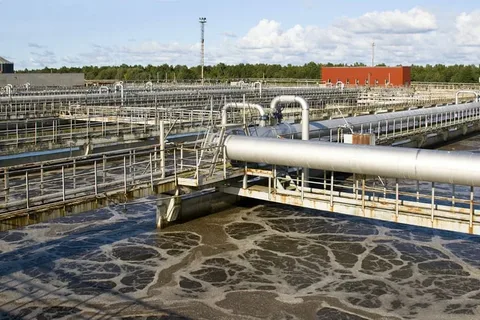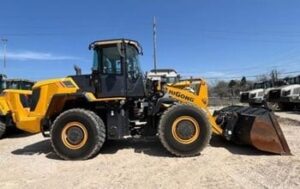What is an SBR Wastewater Treatment System?
Wastewater treatment is a crucial process for protecting public health and the environment. Many different treatment methods exist, each with...

Wastewater treatment is a crucial process for protecting public health and the environment. Many different treatment methods exist, each with its own advantages and disadvantages. One such method, gaining increasing popularity, is the Sequencing Batch Reactor (SBR) system. This article will explain what an SBR system is, how it works, its benefits, and its applications.
Understanding Wastewater Treatment: A Necessary Process
Before we delve into SBR wastewater treatment systems, it’s important to understand why wastewater treatment is necessary. Wastewater, whether from homes, industries, or agriculture, contains various pollutants, including organic matter, nutrients (like nitrogen and phosphorus), pathogens, and suspended solids. If untreated wastewater is released into the environment, it can contaminate water sources, harm aquatic life, and pose serious health risks to humans. Wastewater treatment aims to remove these pollutants, making the water safe for discharge or reuse.
Introducing SBR Systems: A Batch-Wise Approach

An SBR system is a type of activated sludge process for wastewater treatment. Unlike conventional activated sludge systems that operate continuously, SBR systems work in a batch-wise manner. This means that all the treatment steps, from filling to discharge, occur within a single tank in a sequential cycle. This simplifies the treatment process and can offer several advantages.
The SBR Cycle: A Step-by-Step Breakdown
The SBR process involves a series of distinct phases that occur within the same tank:
- Fill: Raw wastewater enters the reactor tank. This phase continues until the desired volume of wastewater is reached.
- React: During this phase, the biological treatment process takes place. Microorganisms within the tank, known as activated sludge, consume the organic pollutants in the wastewater. This is where the magic happens – the bacteria break down the harmful substances.
- Settle: After the reaction phase, the activated sludge is allowed to settle to the bottom of the tank. This separates the treated water from the sludge. It’s like letting the sediment settle in a glass of muddy water.
- Decant: The treated water, now clear and relatively clean, is removed from the top of the tank. This is the treated effluent that can be discharged or further processed.
- Idle (Sometimes): Some SBR systems include an idle phase between decant and fill. This allows for further settling or prepares the system for the next cycle.
- Sludge Waste (or WAS – Waste Activated Sludge): Periodically, a portion of the settled sludge is removed from the tank. This “waste activated sludge” contains excess microorganisms and needs to be treated separately. This prevents the buildup of too much sludge in the reactor.
This complete sequence of phases constitutes one SBR cycle. The cycle then repeats, treating subsequent batches of wastewater.
How SBR Systems Work: The Science Behind the Treatment
The heart of the SBR system is the biological treatment process that occurs during the react phase. This process relies on the activity of microorganisms, primarily bacteria, within the activated sludge.
Activated Sludge: The Tiny Workers
Activated sludge is a complex mixture of microorganisms, including bacteria, fungi, protozoa, and other organisms. These microorganisms work together to break down organic pollutants in the wastewater. They use the organic matter as a food source, converting it into carbon dioxide, water, and new cell growth.
Aeration: Providing Oxygen for the Microbes
During the react phase, air is typically pumped into the tank (aeration). This provides the necessary oxygen for the microorganisms to thrive and efficiently break down the organic pollutants. Some SBR systems use specialized equipment for aeration, such as diffusers or surface aerators.
Nutrient Removal: A Key Advantage
SBR systems can be designed to remove nutrients like nitrogen and phosphorus, which can contribute to water quality problems if discharged into the environment. This is achieved by creating specific conditions within the reactor that promote the growth of microorganisms that can remove these nutrients. This might involve alternating aerobic (oxygen-rich) and anaerobic (oxygen-free) conditions within the tank.
Advantages of SBR Systems: Why Choose SBR?
SBR systems offer several advantages over conventional wastewater treatment methods:
Compact Design: Smaller Footprint
SBR systems require only a single tank for all treatment processes, making them more compact than conventional systems that require multiple tanks. This is particularly beneficial in areas where land is limited or expensive.
Flexibility: Adapting to Changing Conditions
SBR systems are highly flexible and can be easily adjusted to accommodate variations in wastewater flow and pollutant levels. The cycle times and operating parameters can be modified as needed.
Efficient Treatment: High-Quality Effluent
SBR systems can achieve high levels of pollutant removal, producing treated effluent that meets stringent discharge standards. They are particularly effective at removing organic matter, nutrients, and suspended solids.
Lower Capital and Operating Costs: Economical Solution
In some cases, SBR systems can have lower capital and operating costs compared to conventional systems, particularly for smaller to medium-sized applications.
Simplified Operation: Easier to Manage
The batch-wise operation of SBR systems can simplify the overall treatment process and make it easier to manage compared to continuous flow systems.
Applications of SBR Systems: Where SBR is Used
SBR systems are used in a variety of applications:
Municipal Wastewater Treatment: Serving Communities
SBR systems are commonly used for treating municipal wastewater from towns and cities. They are particularly well-suited for smaller communities or decentralized treatment systems.
Industrial Wastewater Treatment: Meeting Specific Needs
SBR systems can be adapted to treat wastewater from various industries, including food processing, textile manufacturing, and chemical plants. They can be designed to remove specific pollutants that are present in industrial wastewater.
On-site Wastewater Treatment: Decentralized Solutions
SBR systems can be used for on-site wastewater treatment at individual homes, businesses, or remote locations where connection to a centralized sewer system is not feasible.
Wastewater Reuse: Conserving Water Resources
The high-quality effluent produced by SBR systems can be further treated and reused for non-potable purposes, such as irrigation or industrial cooling, conserving valuable water resources.
Conclusion
SBR wastewater treatment systems offer a versatile and effective method for treating wastewater. Their compact design, flexibility, and efficient treatment capabilities make them a valuable tool for protecting public health and the environment. As water conservation and wastewater treatment become increasingly important, SBR systems are likely to play an even greater role in the future of wastewater management.
For more insightful articles related to this topic, feel free to visit thenewsus.com




